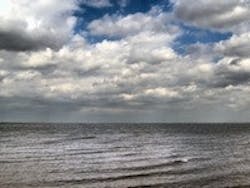USDA to Expand Investment in Water Quality Within Western Lake Erie Basin
U.S. Department of Agriculture (USDA) Secretary Tom Vilsack announced that the USDA's Natural Resources Conservation Service (NRCS) will invest an additional $5 million to help Ohio, Michigan and Indiana improve water quality in the Western Lake Erie Basin. These investments will enable the region's farmers to reduce the amount of nutrients entering the watershed, one of the sources of disruptive algae blooms.
This announcement expands on the efforts already under way to help farmers implement conservation practices that benefit water quality. This year NRCS has devoted approximately $7.6 million in financial assistance for producers in the Western Lake Erie Basin across a range of conservation practices like cover crops and nutrient management.
"USDA is committed to helping farmers do their part to protect and improve water quality in Lake Erie, and this targeted funding will allow for solutions to be expanded and delivered more quickly," Vilsack said. "A problem as complex as this one will demand wide attention, from agriculture to municipalities, and we will continue to work with the Western Lake Erie Basin Partnership and other partners across the region to find common ground to address water quality issues in the basin."
The funding announced today is being made through the Farm Bill's Environmental Quality Incentives Program (EQIP) and will allow NRCS to help farmers apply selected conservation practices shown to help water quality, such as planting cover crops, adding gypsum to soil, implementing conservation tillage or no-till systems on crop fields, installing agricultural drainage water management systems, and implementing nutrient management plans. On average, farmers and ranchers contribute half the cost of implementing conservation practices.
Between 2009 and 2014, NRCS has invested approximately $57 million through Farm Bill Programs in the Lake Erie Basin. Studies are showing that between 2009 and 2014, the new steps farmers are taking with NRCS assistance have reduced annual nutrient and sediment losses by approximately 7 million pounds of nitrogen, 1.2 million pounds of phosphorus, and 488,000 tons of sediment in the Lake Erie Basin.
The cause of algae blooms is complex; water temperature, lack of agitation, rainfall and runoff from farms and lawns, zebra mussels and the impacts of climate change can all contribute to the problem.
In addition to this targeted funding, NRCS is also leveraging partner investments through the new nation-wide Regional Conservation Partnership Program (RCPP) through a project benefiting water quality by reducing the runoff of phosphorous into the waterways in the western Lake Erie basin. NRCS is investing $17.5 million into this project—the largest investment in the first round of RCPP—which is joined by state governments and other partners.
Source: U.S. Department of Agriculture
